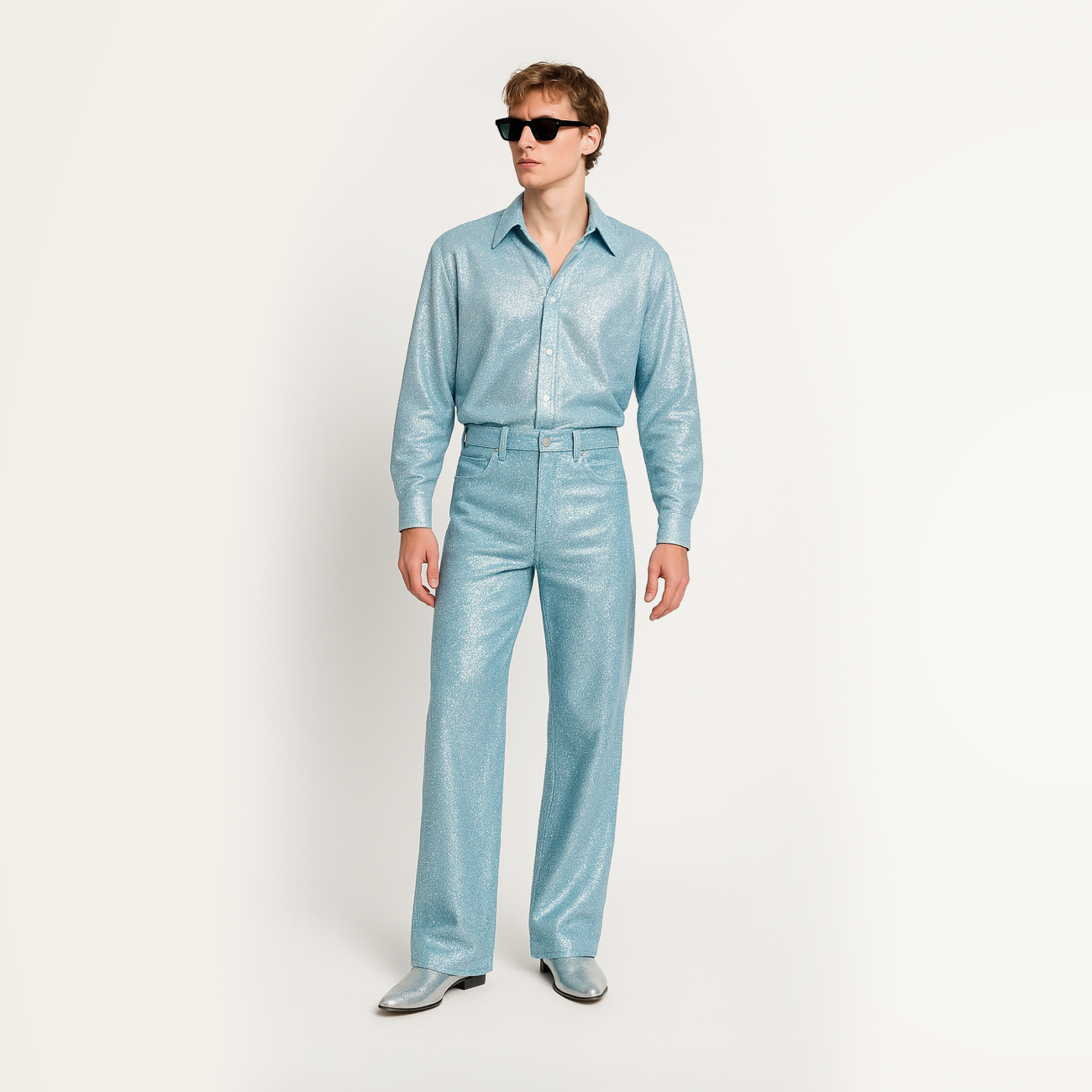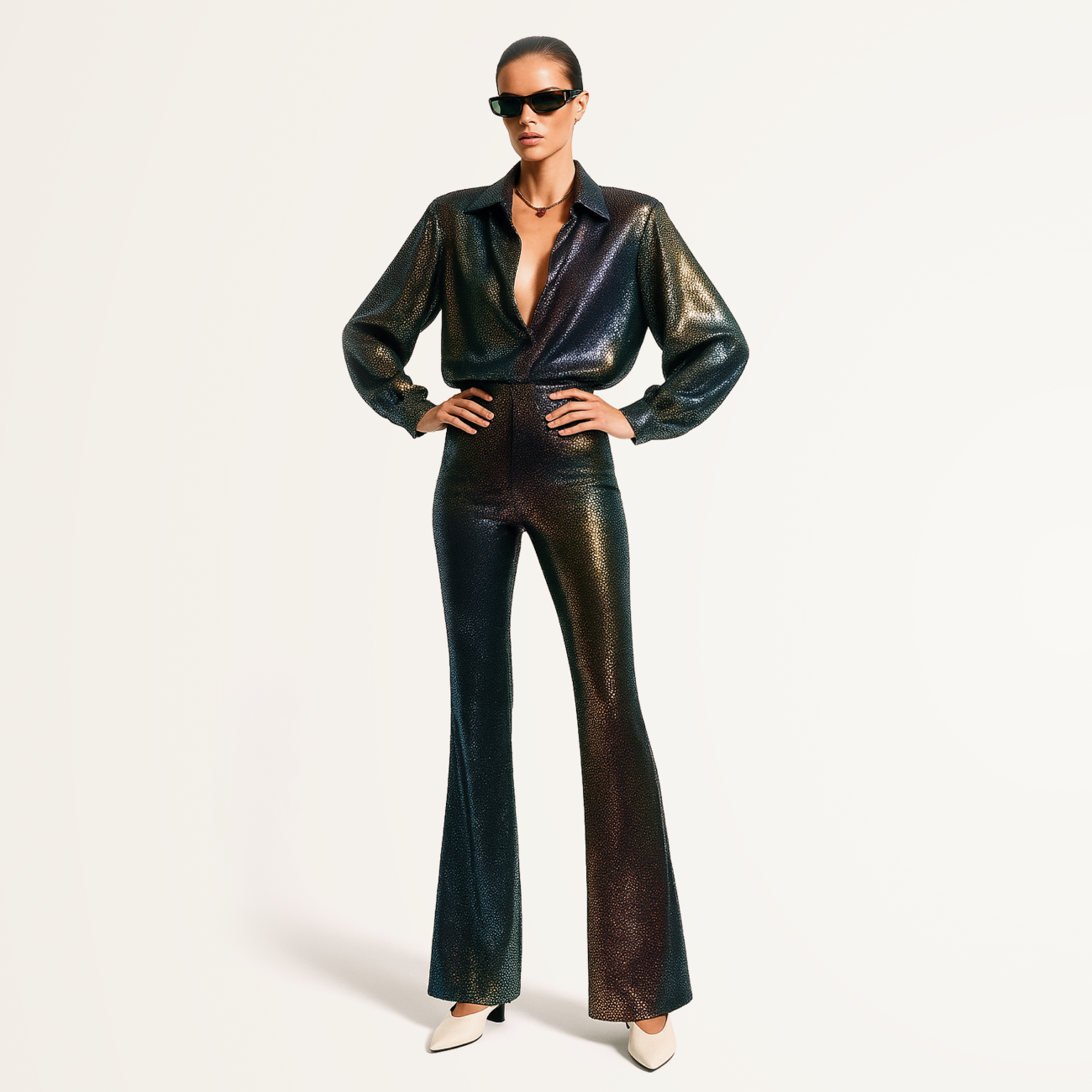Disco
Disco style emerged at the intersection of a desire for freedom, a love for fun, and a thirst to express one's uniqueness. Inspired by New York’s nightlife and a craving for showy luxury, it became the symbol of the late '70s—a time when everyone could “shine.” This is a style that declares life is a celebration, and expressing individuality should be bold and noticeable. Disco is the art of being in the spotlight, a world where glamour and the joy of self-expression take center stage.
History
The history of disco style dates back to the 1970s—a time of major societal change. This era was marked by openness, experimentation, and a break from convention, which had a profound influence on fashion and cultural trends. Disco style emerged as a fusion of music, nightlife culture, and the desire to express individuality during a period of rapid social development. It became a symbol of an era in which people sought to escape the rigid boundaries imposed by society and the fashion of previous decades.
Disco culture originated in New York City, where iconic clubs like Studio 54 became the epicenters of not only music but also fashion experimentation. Studio 54 was more than just a nightclub—it was a stage for self-expression, where people from all walks of life, from celebrities to everyday urbanites, came together. DJs played disco tracks that created a hypnotic dance atmosphere, and clubgoers dressed in bold, extravagant outfits that reflected the energy and mood of the music. Disco music was upbeat, infectious, and instantly lit up the dance floor—and this was mirrored in fashion.
Disco became a symbol of freedom not only in fashion but also in sociocultural life. It was a time when LGBTQ+ individuals, African Americans, and Latinx communities—previously marginalized in mainstream culture—found visibility and celebration on dance floors and within disco culture at large. Their influence on the music, fashion, and atmosphere of the clubs became an essential part of the disco era. Disco fashion offered an opportunity for personal expression and freedom of choice, which was significant in the context of the ongoing fight for equality and recognition of diversity.
Many stars of the time became icons of disco style and embodied its spirit—figures like Diana Ross, Donna Summer, the Bee Gees, and Grace Jones. Disco style didn't go unnoticed by the world of high fashion. Designers of the time were inspired by disco culture and created garments that echoed its bold aesthetic.
By the late 1970s, disco style had moved beyond nightclubs and entered the mainstream. It could be seen not just in big cities but also in smaller towns, and disco elements became part of everyday fashion. However, by the early 1980s, disco’s popularity began to wane. The rise of punk and new wave offered a counterpoint to disco’s glamorous aesthetic and its focus on appearance.
The decline of disco didn’t mean its complete disappearance. Elements of the style remained and were reinterpreted in new trends, especially in the 1980s, with their love of sparkle and boldness. In the late 1990s and early 2000s, disco style again became a source of inspiration for designers who revisited the era, incorporating metallics, sequins, and vibrancy into contemporary collections.
Today, disco style is remembered as a symbol of a time when people broke free from strict norms and began to express their individuality through clothing and dance. It continues to represent a spirit of freedom, playfulness, and the desire for self-expression that still inspires people around the world.
Signature elements of the style
Color palette
The disco palette features bright, eye-catching shades—from intense metallics (silver, gold, bronze) to vivid neon and acid tones like hot pink, emerald green, purple, and electric blue. These colors are perfect for club lighting and dance floors, reflecting light and creating a radiant effect.
Prints
Typical prints include psychedelic and geometric patterns, abstract designs, and unique textures like holographic or shimmering finishes that enhance the sense of movement and highlight the energetic vibe.
Textures
Disco fabrics are almost always shiny and light-reflective—think lurex, metallics, sequins, and satin. These materials create a “light play” effect and amplify the visual impact on the dance floor, where clothing literally reflects rhythm and flashing lights.
Cuts & silhouette
Disco cuts emphasize the figure and often balance between form-fitting and flowing. Think bodycon dresses with open backs, flared pants, fitted tops, and high-waisted jumpsuits. Open shoulders, deep necklines, and backless designs add sensuality and boldness.
Wardrobe essentials
- Jumpsuits: Figure-hugging or flared-leg jumpsuits, often adorned with sequins and lurex, became an iconic symbol of disco style.
- Flared Pants: Wide-leg bottoms create dynamic movement—perfect for dancing under disco lights.
- Sequin Dresses: Whether mini or maxi length, these shimmering dresses add sparkle and draw attention.
- One-Shoulder or Backless Tops: Uniquely cut tops emphasize sensuality, a key feature of disco-era fashion.
- Platform Shoes: High platforms or heels with metallic finishes or embellishments add height and dramatic flair.
Substyles
Email: support@belt-app.com


















